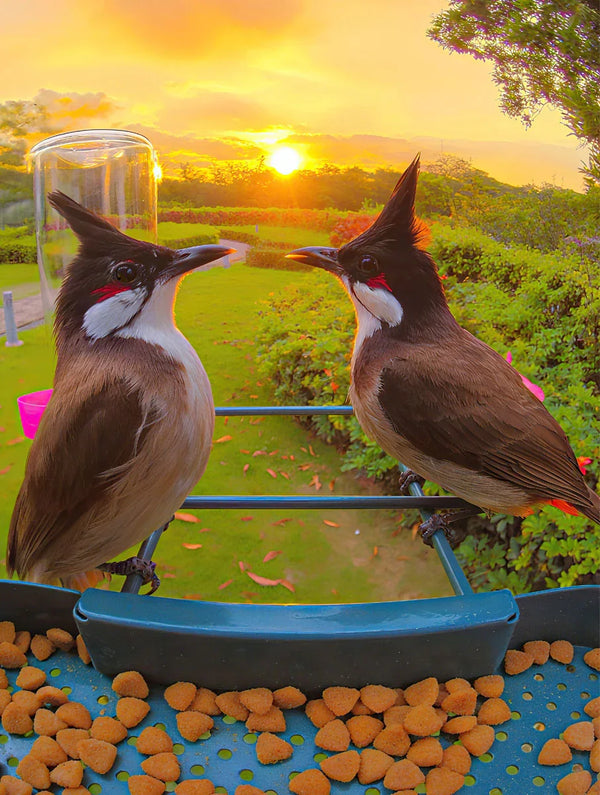Unravel the Mystery: Discover the Enchanting Bird You Spotted!
Birdwatching is a delightful hobby that connects us with nature and offers endless excitement, particularly when we spot an unfamiliar feathered friend. The urge to identify a specific bird can stem from various motivations, such as sheer curiosity, a desire to contribute to conservation efforts, or a simple appreciation for the beauty of these creatures. Whether it’s a flash of color flitting through your backyard or a melodious call echoing from the treetops, the moment you see a bird that captivates your attention often ignites a quest for knowledge. This article aims to guide you through the fascinating world of bird identification, equipping you with the tools and insights necessary to unravel the mystery of the bird you have seen.

Understanding Bird Identification
To identify a bird accurately, it’s essential to observe several key characteristics. Start by noting the bird's size; is it small like a sparrow or large like an eagle? Coloration is another important feature—birds can display a vast array of hues, from the vibrant blues of a bluejay to the muted browns of a sparrow. Markings, such as stripes or spots, can also offer clues to a bird’s identity. Beyond physical traits, understanding a bird's habitat is crucial. Birds often thrive in specific environments like wetlands, forests, or urban areas. Additionally, observing behavior—like how it interacts with its surroundings, its feeding habits, or its flight patterns—can provide valuable context for identification. Through keen observation and a bit of patience, you can sharpen your birdwatching skills and enhance your overall experience in the great outdoors.
Common Birds and Their Distinguishing Features
As you embark on your birdwatching journey, you’re likely to encounter several common species. Familiarizing yourself with their distinct features can help you identify them more easily. Here are five notable birds:
- American Robin: Recognizable by its bright orange-red breast, this bird is often seen hopping on lawns. Its cheerful song makes it a favorite among many birdwatchers.
- Blue Jay: With striking blue and white plumage, the Blue Jay is known for its intelligence and complex social behavior. Its loud call can often be heard in wooded areas.
- House Sparrow: A common sight in urban areas, the House Sparrow features a brown and gray body with a short tail. They are highly social and often seen in groups.
- Red-tailed Hawk: This bird of prey is known for its distinctive reddish-brown tail and broad wings. Often spotted soaring in the sky, it has a piercing scream that echoes across the landscape.
- Cardinal: The Northern Cardinal is famous for its vivid red color, especially in males. Its melodious song can brighten any day in the garden.
Each of these birds has unique behaviors that can aid in identification, making them great subjects for both novice and experienced birdwatchers alike.
Using Field Guides and Apps
With the rise of technology, birdwatchers now have access to a variety of tools for identification. Field guides, which are often printed books filled with illustrations and descriptions, have been a staple for decades. They allow bird enthusiasts to compare species side by side. However, mobile apps have revolutionized bird identification by providing instant access to vast databases, including photos, calls, and even community forums. While apps offer the convenience of portability and quick searches, they can sometimes lack the depth and detail found in traditional field guides. Ultimately, the best approach may be to use both resources to enhance your birdwatching experience.
Recording Your Bird Sightings
Keeping track of your bird sightings can be both rewarding and educational. Consider maintaining a bird journal where you can jot down details about the birds you see, including their colors, behaviors, and the locations where you spotted them. Alternatively, many online platforms and apps allow you to log your sightings and share them with fellow birdwatchers. This practice not only helps you remember your experiences but also contributes to a broader understanding of bird populations and behaviors. Engaging with the birdwatching community can enrich your knowledge and inspire you to explore new areas.
Conservation and Ethical Birdwatching
As you delve into birdwatching, it’s crucial to recognize the importance of conservation efforts and ethical practices. Identifying birds and understanding their habitats can play a significant role in conservation initiatives. By being aware of the challenges birds face, such as habitat loss and climate change, you can contribute to efforts aimed at protecting these magnificent creatures. Always practice ethical birdwatching: respect wildlife, maintain a safe distance, and avoid disturbing birds during nesting season. Your responsible actions can make a positive impact, ensuring that these avian wonders continue to thrive for generations to come.
Embrace the Journey of Birdwatching
Bird identification is a joyful pursuit that deepens our connection to nature and enhances our appreciation for the avian world. By understanding the basics of identification and familiarizing yourself with common species, you can embark on a rewarding journey of discovery. Remember to document your sightings, engage with the birdwatching community, and advocate for conservation efforts. So grab your binoculars, step outside, and immerse yourself in the enchanting realm of birds around you. Each sighting is not just a moment; it’s an opportunity to learn, appreciate, and contribute to the beautiful tapestry of wildlife.








